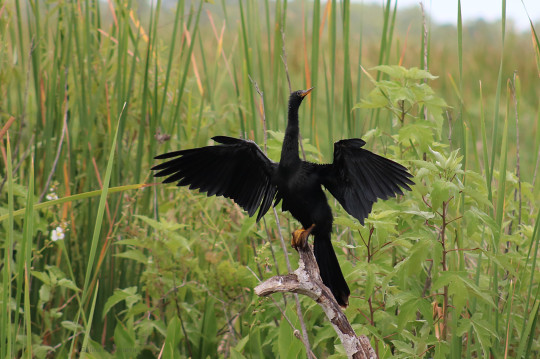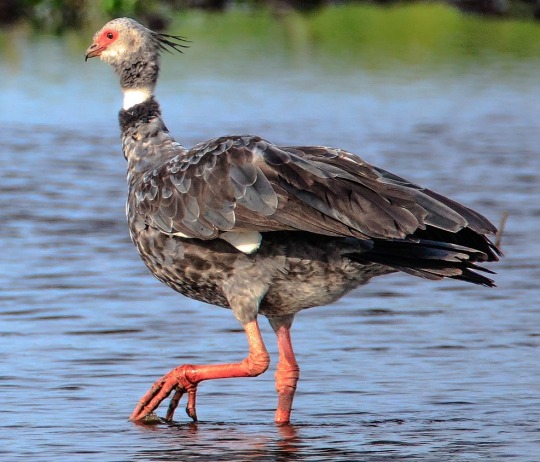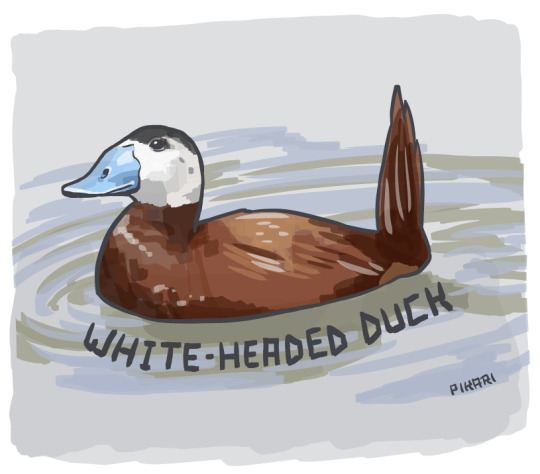#water bird
Text

Grey-headed Swamphens (Porphyrio poliocephalus), raising a ruckus, family Rallidae, order Gruiformes, Vembanad Lake, India
photograph by Agasty Roy Arpita
1K notes
·
View notes
Text

sold
pictures don’t always do them justice. I should take more videos
489 notes
·
View notes
Text

Mentally I'm here <3
Drawn during stream today!
Find me here
#art#illustrators on tumblr#artists on tumblr#illustration#digital art#cute art#animal illustration#digital illustration#art by kraaico#digital painting#sea#ocean#seagull#birds#water bird#summer vibes#summer aesthetic
2K notes
·
View notes
Text

Beanie Babies: Gracie
#beanie babies#ty#ty beanie babies#gracie#gracie beanie babies#gracie the swan#swan#bird#water bird#my photography#cutencuddlycreaturesphotos#plush#plushie#stuffed animal#kidcore#toycore#retro#old toy#plushcore
75 notes
·
View notes
Text

Oriental Darter stretching out on Malleable Bird Monday
» Etsy • Various Links «
© Harlen Chen
#Oriental Darter#water bird#artists on tumblr#bird#fat bird#fluffy#round#borb#chonk#chunk#art#illustration#🐦#burb#birb#digital art#HC#regular content#2024#animal#animals#rotund
61 notes
·
View notes
Text

Silhouettes
Palm Bay, FL - May 22
#photography#nature#fauna#wildlife#water bird#pelican#flight#shoreline#riverside#sunrise#dawn#silhouette#reflections
71 notes
·
View notes
Text

Double-crested Cormorant (Phalacrocorax auritus)
Taken at Gleason Park in Indian Harbour Beach, FL
#double crested cormorant#cormorant#bird#birds#bird photography#water bird#water birds#animal#animals#animal photography#wildlife#wildlife photography#nature#nature photography#photography#florida#florida photograhy#florida photographer#Gleason park#nikon camera#nikon photography#nikon d3500#Phalacrocorax auritus
40 notes
·
View notes
Text

Western Grebe
On my way back home from the Y the other day I saw this grebe swimming around the kids fishpond. It was very cooperative.
Nikon D500, Manual Mode, Tamron 150-600mm VC G2, F/6.3, ISO 100, ET 1/800, Focal Length 550mm, Handheld, Vibration Control on
#western#grebe#western grebe#duck#fake#hen#water#waterfowl#water bird#fowl#wildlife#nature#fall#autumn#rocky#mountains#rockies#rocky montains#beaverhead#beaverhead-deerlodge national forest#photography#photos of southwest montana#dillon#brad christensen#montana#photographer
24 notes
·
View notes
Photo

via
#5#nature#landscape#curators on tumblr#landscape photography#photography#nature photography#water bird#bird#florida#usa#Anhinga#wildlife
69 notes
·
View notes
Text

Black Heron (Egretta ardesiaca)
Family: Heron Family (Ardeidae)
Least Concern: Least Concern
A relatively small species of heron with dark grey feathers and distinctive bright yellow feet, the Black Heron is found across much of Sub-Saharan Africa (reportedly being most common in the east of the continent, including in parts of Madagascar) and is best known for its unique and extremely odd-looking method of catching prey; like other herons Black Herons are carnivorous and feed on fish, frogs and aquatic invertebrates, but instead of relying solely on their excellent eyesight and fast reflexes to catch their prey members of this species form "canopies" by spreading their wings around their bodies to form dome-like structures, luring prey into what seems like a shaded, sheltered hiding place before quickly snatching them out of the water using their long, powerful beaks. Typically found near shallow lakes or streams but also sometimes seen in coastal environments, Black Herons are often seen travelling and feeding in small groups, and generally build their nests (which are large, sturdy platform-like structures typically suspended above water to make them harder for predators to access) alongside not only other members of their species but also other species of herons, ibises and cormorants. Black Herons breed during periods of prolonged rainy weather (with the feet of males turning bright red when they are receptive to mating,) and shortly afterwards females produce clutches of 2-4 white or pale blue eggs. Each female will defend her eggs fiercely, and while members of this species will not actively defend other females' eggs nesting in groups is thought to increase every individual egg's likelihood of surviving in the event of a predator attacking, as large colonies of aggressive mother herons are likely to intimidate all but the largest of egg-eaters.
------------------------------------------------------------------
Image Source: Here
#Black Heron#black heron#bird#birds#zoology#ornithology#animal#animals#wildlife#African wildlife#Pelecaniformes#herons#heron#water birds#water bird#nature
19 notes
·
View notes
Text

Southern Screamer (Chauna torquata), family Anhimidae, Pantanal, Brazil
photograph by Murray Foubister
1K notes
·
View notes
Text

Great Crested Grebe
Location: Zaandam, NL
#zaandam#zaanse schans#netherlands#holland#bird#photography#nature#birding#photo#birds#bird photography#wildlife#bird watching#birds nature#nature photography#water bird#grebe#great crested grebe#water
35 notes
·
View notes
Text

A snapshot of a coot.
#coot#coots#waterbird#waterbirds#water bird#water birds#aquatic bird#aquatic birds#bird#birds#a coot#snapshot#snapshots#picture#pictures#image#images#nature#animal#animals
17 notes
·
View notes
Video
Wood Duck ( Drake ) by Kip Hutchison
Via Flickr:
Resting time for the Woody.
#Wood Duck#Wood Ducks#Ducks#Duck#Water Birds#Water Bird#Fresh Water Ducks#Fresh Water Birds#Wildlife#Vancouver Island Wildlife#VancouverIslandBirds#Ocean Birds#Birds.#Bird#British Columbia#flickr
16 notes
·
View notes
Text

Blues
Wabasso, FL - Sep 23
#photography#nature#wildlife#bird#water bird#little blue heron#portrait#shoreline#riverside#coastal#lagoon
33 notes
·
View notes
Text

They call me stiff-tail, but I say having a rudder at the bum is quite useful.
White-headed Duck (Oxyura leucocephala)
Spain, North Africa, Western Asia and Central Asia
Status: Endangered
Threats: habitat loss, pollution, hunting
#bird#duck#bird art#conservation#wildlife art#seabird#water bird#spain#north africa#middle east#central asia
6 notes
·
View notes
